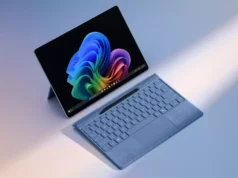Scientists in Netherland said they have developed a new Wi-Fi technology which is said to be faster than existing wireless networks by a factor of almost hundred.
That does make for a tall claim indeed considering the best Wi-Fi networks currently available are capable of no better than 300Mbit per second. Now scientists at the Eindhoven University of Technology in the Netherlands said the Wi-Fi they have developed is capable of data transmission at 42.8Gbit per second. The speed difference is even starker when compared against the average wireless connection speed in the Netherlands which stands at a mere 17.6Mbit/s.
The above speed achieved has however been under test conditions and over a distance of 2.5 meters. The lead researcher of the team, Joanne Oh said their Wi-Fi technology is based on the relatively harmless infrared rays. The network though has only been used for downloads using the infrared beams while uploads are still being managed using radio signals.
Elaborating further, researchers revealed users wouldn’t be required to share the signals since each device will be getting its own ray of the infrared beam. The Eindhoven team also claim the system devised by them is also simple and cheap to setup and maintain compared to existing systems.
The whole setup comprises of what the researchers have labeled as ‘central antennas.’ These antennas can preferably be installed in the ceilings for best results and will serve to direct the light beams to the particular device. The antennas, on their part, will be getting the light via optical fiber. The antennas are also able to propagate the light rays of a specific wavelength at a specific angle thanks to the pair of gratings that they come equipped with.
If the user moves around the premise with the device, like say in an office or a warehouse, the device will be getting the signals as long as it remains within the line of sight of the infrared light beams. The system, however, envisages a string of antennas to be set up, with the particular antenna in the vicinity of the device to transmitting the light beams. For this, the network also relies on a radio signal to track the location of each device.











Comments are closed.